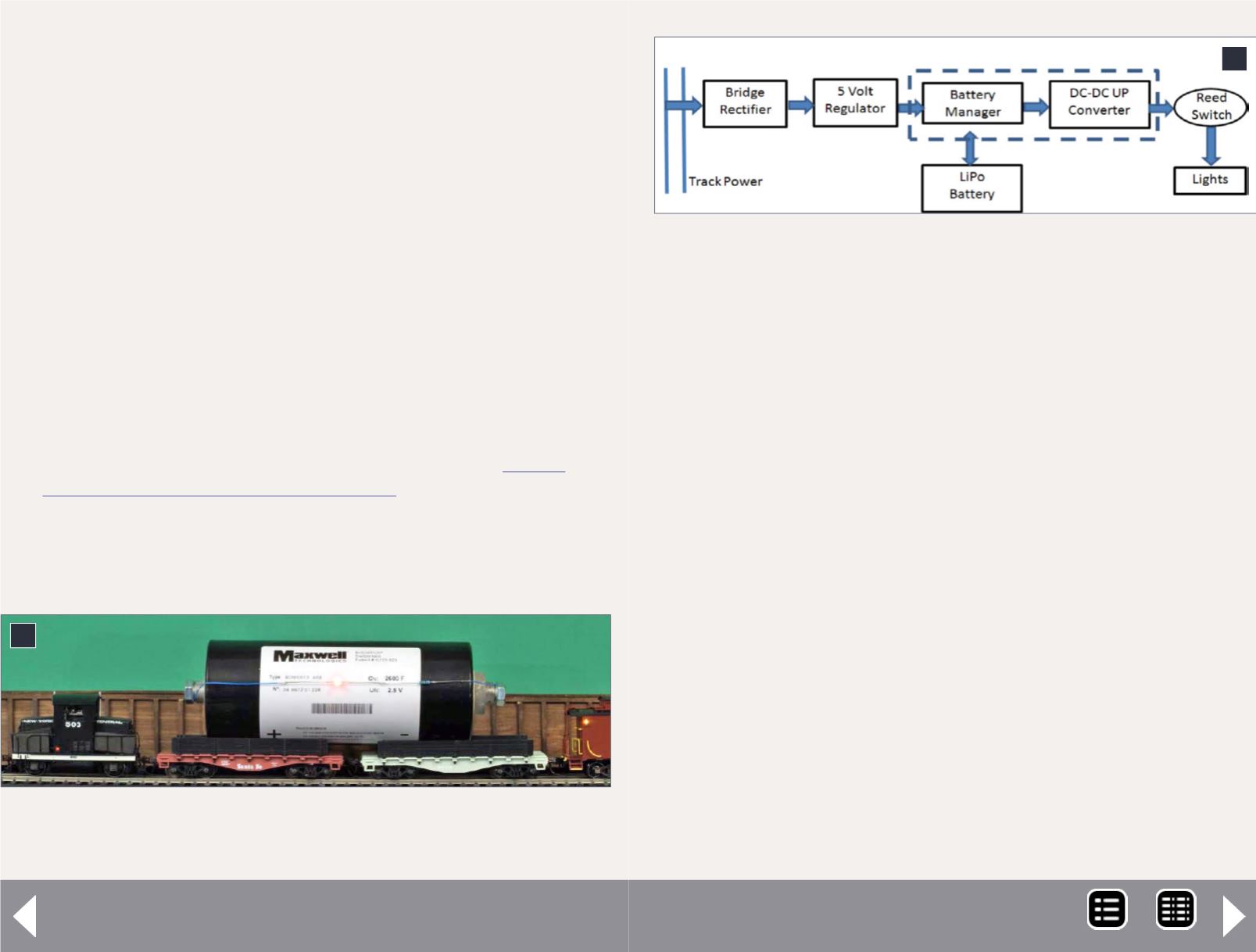
Battery-powered models - 2
batteries, but recharging them has often resulted in special
connections and more handling.
This leads to considering combinations of techniques and
technologies, eventually resulting in “KAOS”-- Keep-Alive On
Steroids. KAOS power uses high energy density, lithium poly-
mer (LiPo) batteries, a low-cost, battery manager/converter
board, and a simple scheme to charge the battery from what-
ever power is on the rails —DCC or DC power. Both work just
fine. We will explore a number of alternatives and their issues.
We’ll also consider a low-cost approach for remote control.
This lays the groundwork for more modeling possibilities, and,
of course, more fun!
Power, regulation, recharge, and conversion
This began as an experiment to see how the small but power-
ful LiPo batteries could be used for modeling. I have had some
success using them with my small mobile cranes (See
) and I wanted to
put them on the rails. There are additional complications with
charging and maintaining multi-cell LiPos used to get the higher
voltages we are familiar with – like 12 volts.
2
2. 2600 farad keep-alive capacitor with clearance
problem.
3
3. Basic power block diagram.
To keep things simple I elected to use a single 3.7 volt cell,
recharged from the rails. LiPo batteries have a usable voltage
range from about 3 to 4.2 volts, so part of the problem is con-
verting battery power to a usable range for model railroading.
Low cost and ease of construction were important constraints
too. The other problem is one of control. If the model is inde-
pendently powered, then how does one control it? It may be
possible to open up a DCC decoder and re-wire it, but my ulti-
mate goal was for autonomous animation applications. So, I
didn’t pursue the DCC mod approach at all.
Before getting into the aspects of control, let’s look at the basic
power source. The power block diagram is in [3]. Whatever
power is on the rails is put through a small full-wave rectifier,
regulated to 5 volts, and fed to the charging inputs of a com-
mercial battery-manager/converter board. This board prevents
overcharging the lithium polymer 240 milliamp-hour (MAH)
battery. The module also controls the charging pattern and
prevents over-discharge which can also damage the battery.
One version of the maintainer board contains a 5 volt DC-DC
converter, which provides a stable, regulated 5 volt power
source until the battery is turned off to prevent over-discharge.
This combination of components provides a stable 5 volt, .45
MRH-Nov 2014


